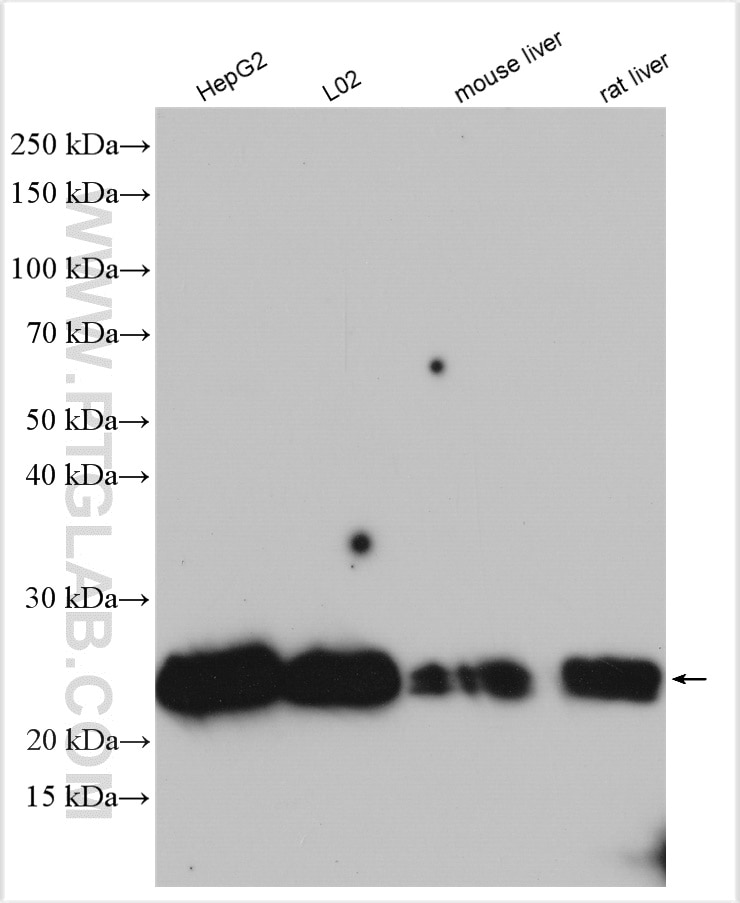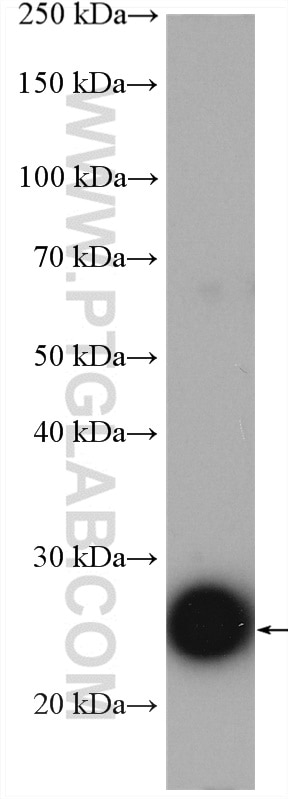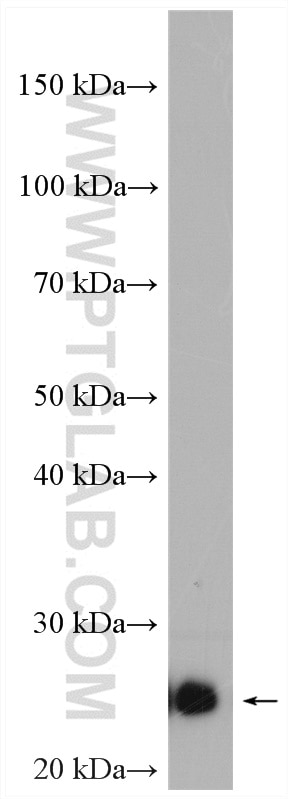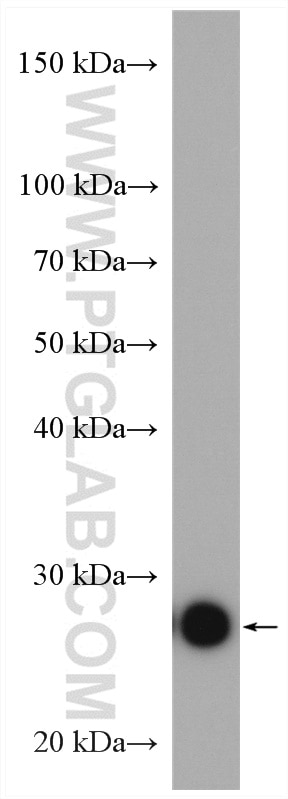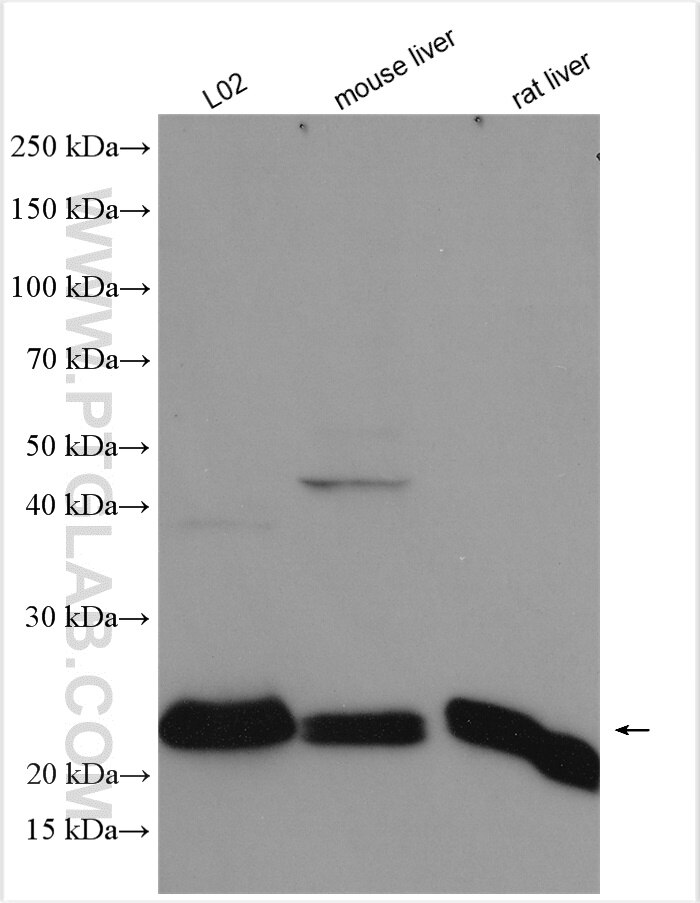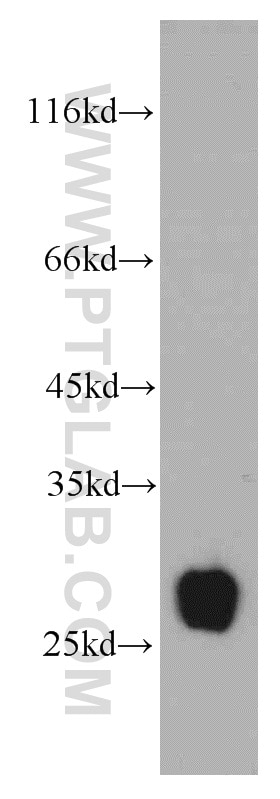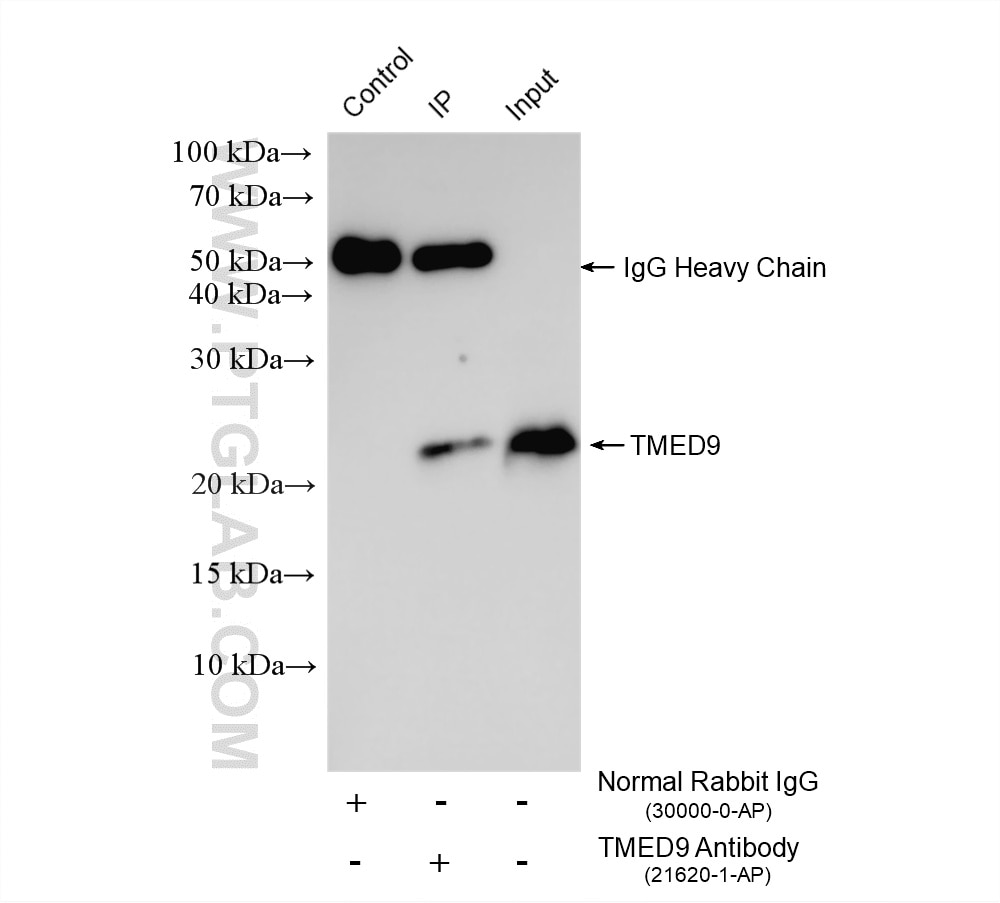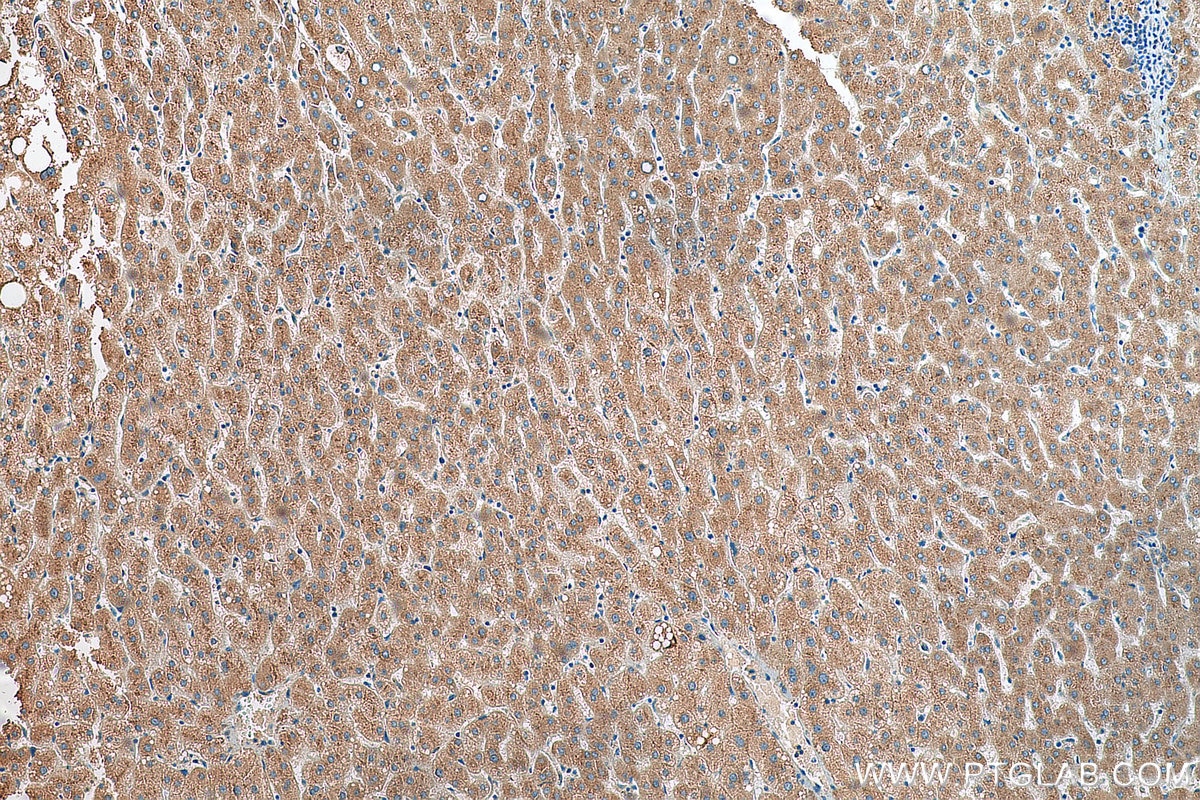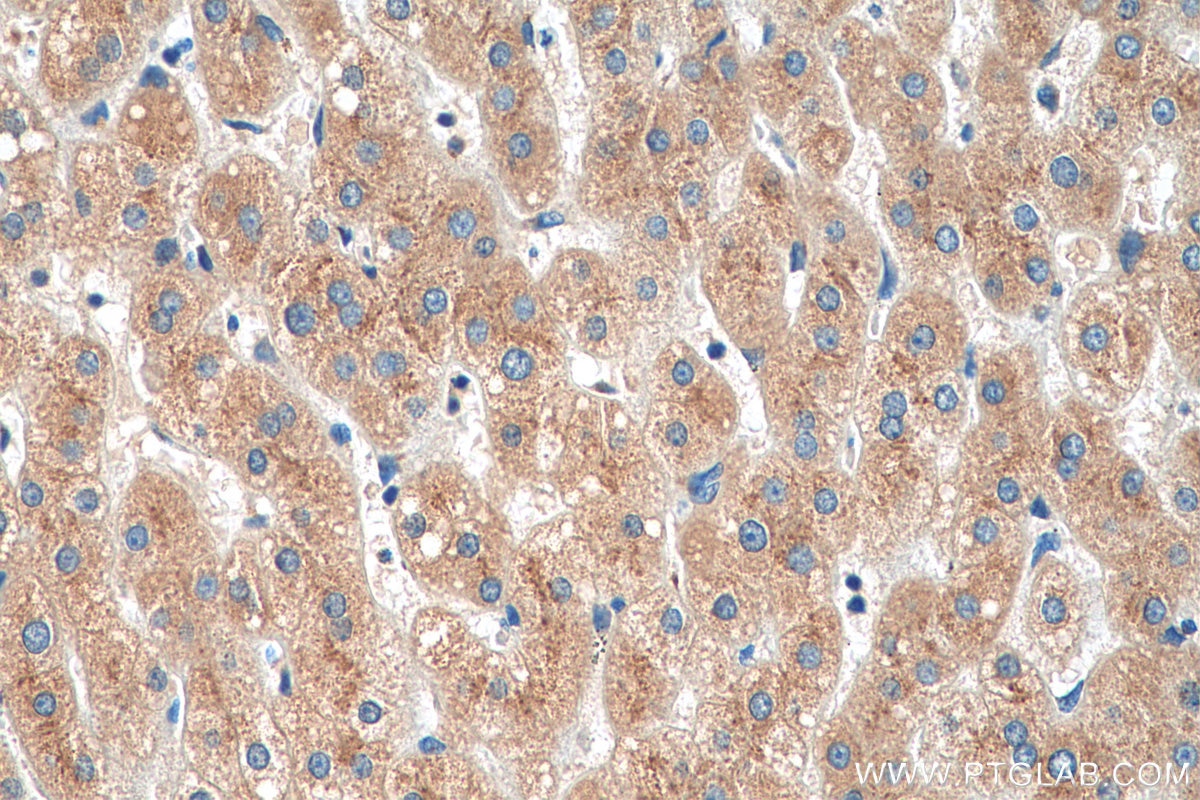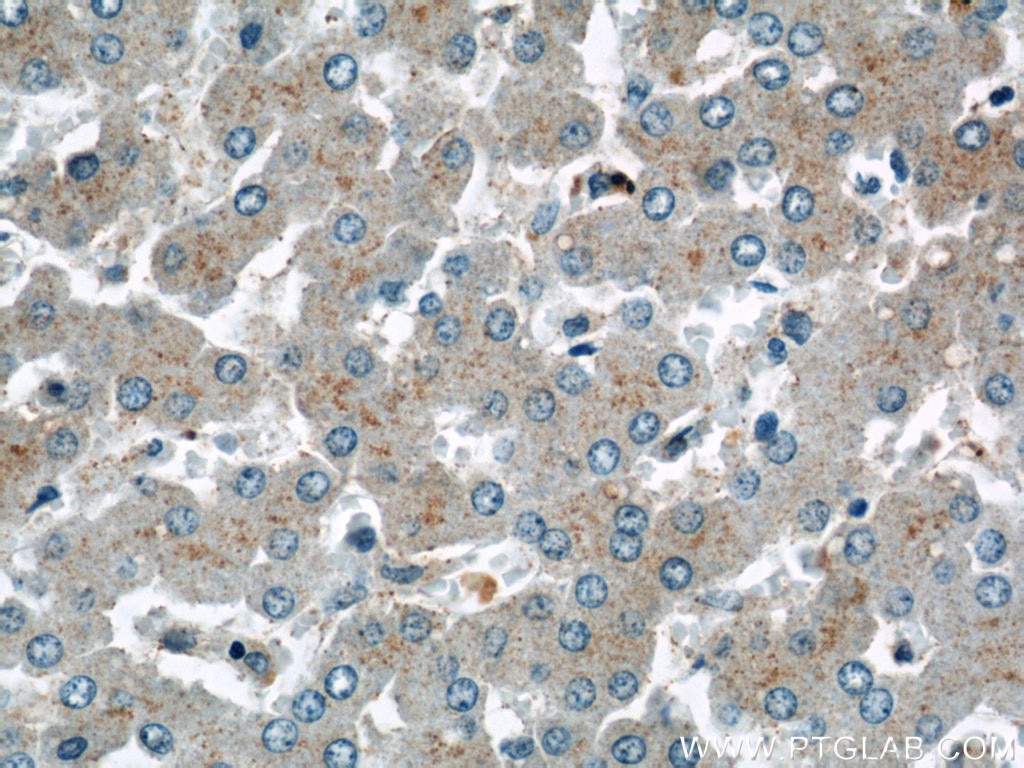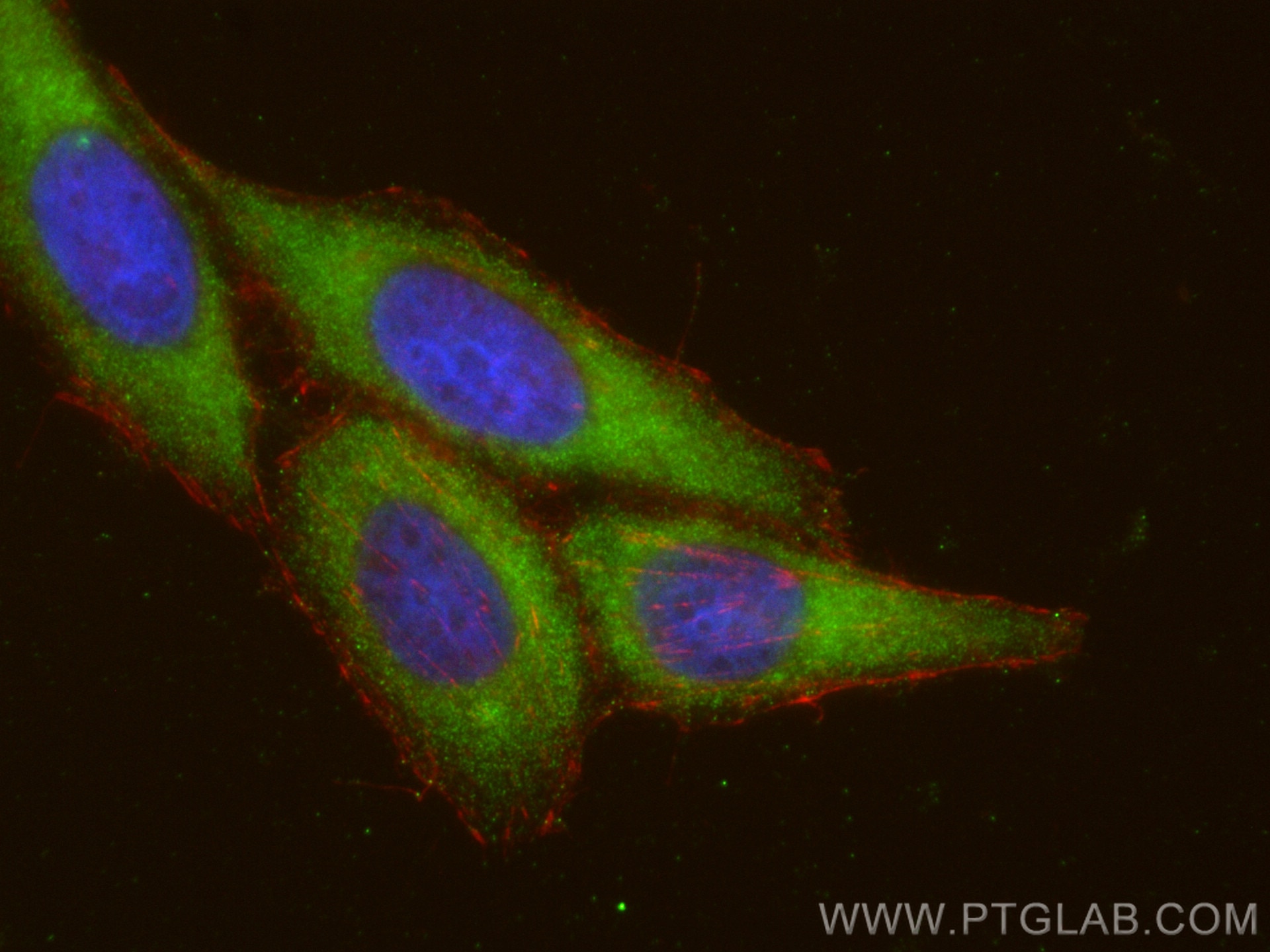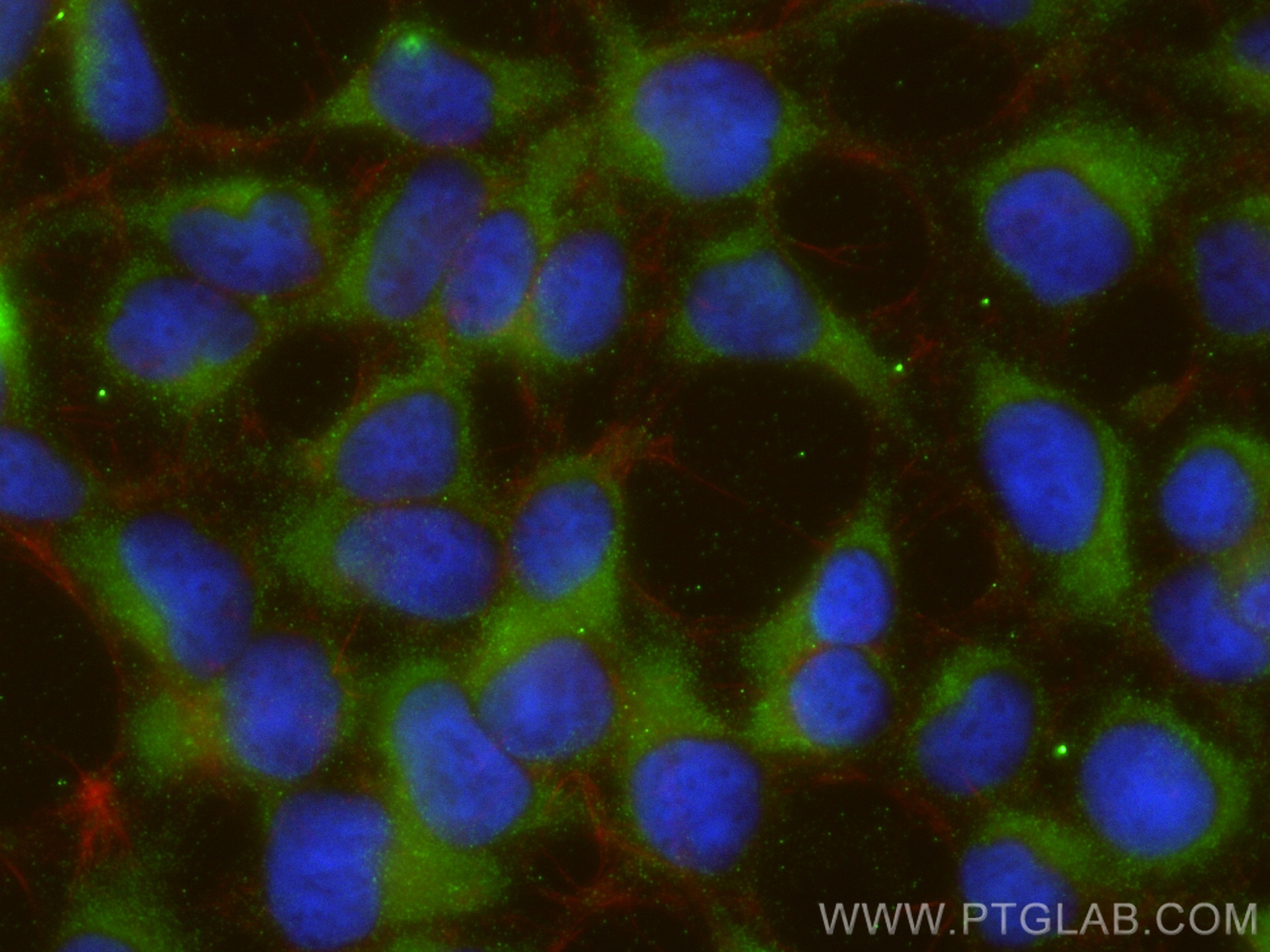Tested Applications
| Positive WB detected in | HepG2 cells, L02 cells, pig liver tissue, mouse lung tissue, mouse pancreas tissue, mouse brain tissue, mouse liver tissue, rat liver tissue |
| Positive IP detected in | HepG2 cells |
| Positive IHC detected in | human liver tissue Note: suggested antigen retrieval with TE buffer pH 9.0; (*) Alternatively, antigen retrieval may be performed with citrate buffer pH 6.0 |
| Positive IF/ICC detected in | HepG2 cells, HEK-293 cells |
Recommended dilution
| Application | Dilution |
|---|---|
| Western Blot (WB) | WB : 1:1000-1:8000 |
| Immunoprecipitation (IP) | IP : 0.5-4.0 ug for 1.0-3.0 mg of total protein lysate |
| Immunohistochemistry (IHC) | IHC : 1:50-1:500 |
| Immunofluorescence (IF)/ICC | IF/ICC : 1:50-1:500 |
| It is recommended that this reagent should be titrated in each testing system to obtain optimal results. | |
| Sample-dependent, Check data in validation data gallery. | |
Published Applications
| KD/KO | See 4 publications below |
| WB | See 9 publications below |
| IHC | See 1 publications below |
| IF | See 2 publications below |
| CoIP | See 1 publications below |
Product Information
21620-1-AP targets TMED9 in WB, IHC, IF/ICC, IP, CoIP, ELISA applications and shows reactivity with human, mouse, rat, pig samples.
| Tested Reactivity | human, mouse, rat, pig |
| Cited Reactivity | human, mouse, rat |
| Host / Isotype | Rabbit / IgG |
| Class | Polyclonal |
| Type | Antibody |
| Immunogen |
CatNo: Ag13813 Product name: Recombinant human TMED9 protein Source: e coli.-derived, PET28a Tag: 6*His Domain: 1-224 aa of BC001123 Sequence: MAVELGVLLVRPRPGTGLGRVMRTLLLVLWLATRGSALYFHIGETEKKCFIEEIPDETMVIGNYRTQLYDKQREEYQPATPGLGMFVEVKDPEDKVILARQYGSEGRFTFTSHTPGEHQICLHSNSTKFSLFAGGMLRVHLDIQVGEHANDYAEIAAKDKLSELQLRVRQLVEQVEQIQKEQNYQRWREERFRQTSESTNQRVLWWSILQTLILVAIGVWQMRH Predict reactive species |
| Full Name | transmembrane emp24 protein transport domain containing 9 |
| Calculated Molecular Weight | 235 aa, 27 kDa |
| Observed Molecular Weight | 24-27 kDa |
| GenBank Accession Number | BC001123 |
| Gene Symbol | TMED9 |
| Gene ID (NCBI) | 54732 |
| RRID | AB_10858623 |
| Conjugate | Unconjugated |
| Form | Liquid |
| Purification Method | Antigen affinity purification |
| UNIPROT ID | Q9BVK6 |
| Storage Buffer | PBS with 0.02% sodium azide and 50% glycerol, pH 7.3. |
| Storage Conditions | Store at -20°C. Stable for one year after shipment. Aliquoting is unnecessary for -20oC storage. 20ul sizes contain 0.1% BSA. |
Background Information
TMED9 (also named as GMP25, GP25L2 or p25) is a member of the EMP24/GP25L family. TMED9 probably forms hetero-oligomeric complexes with TMED7 (p27), TMED2 (p24), and TMED10 (p23) (PMID: 10359607). Located in the endoplasmic reticulum and the Golgi, TMED9 appears to be involved in vesicular protein trafficking, mainly in the early secretory pathway (PMID: 9472029; 10359607).
Protocols
| Product Specific Protocols | |
|---|---|
| IF protocol for TMED9 antibody 21620-1-AP | Download protocol |
| IHC protocol for TMED9 antibody 21620-1-AP | Download protocol |
| IP protocol for TMED9 antibody 21620-1-AP | Download protocol |
| WB protocol for TMED9 antibody 21620-1-AP | Download protocol |
| Standard Protocols | |
|---|---|
| Click here to view our Standard Protocols |
Publications
| Species | Application | Title |
|---|---|---|
Cell Small Molecule Targets TMED9 and Promotes Lysosomal Degradation to Reverse Proteinopathy. | ||
Cell A Translocation Pathway for Vesicle-Mediated Unconventional Protein Secretion.
| ||
Cell Res A new type of ERGIC-ERES membrane contact mediated by TMED9 and SEC12 is required for autophagosome biogenesis.
| ||
PLoS Biol TMED9 coordinates the clearance of misfolded GPI-anchored proteins out of the ER and into the Golgi | ||
BMC Biol ACBD3 modulates KDEL receptor interaction with PKA for its trafficking via tubulovesicular carrier. | ||
J Cell Biol TMEDs mediate versatile cargo transport in vesicle-dependent unconventional secretion |
Reviews
The reviews below have been submitted by verified Proteintech customers who received an incentive for providing their feedback.
FH Giulia (Verified Customer) (02-29-2024) | Specific antibody that works well in Western blot, both for cells and tissue lysates.
|

